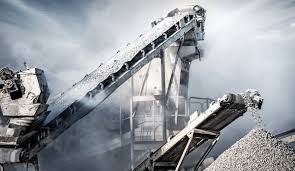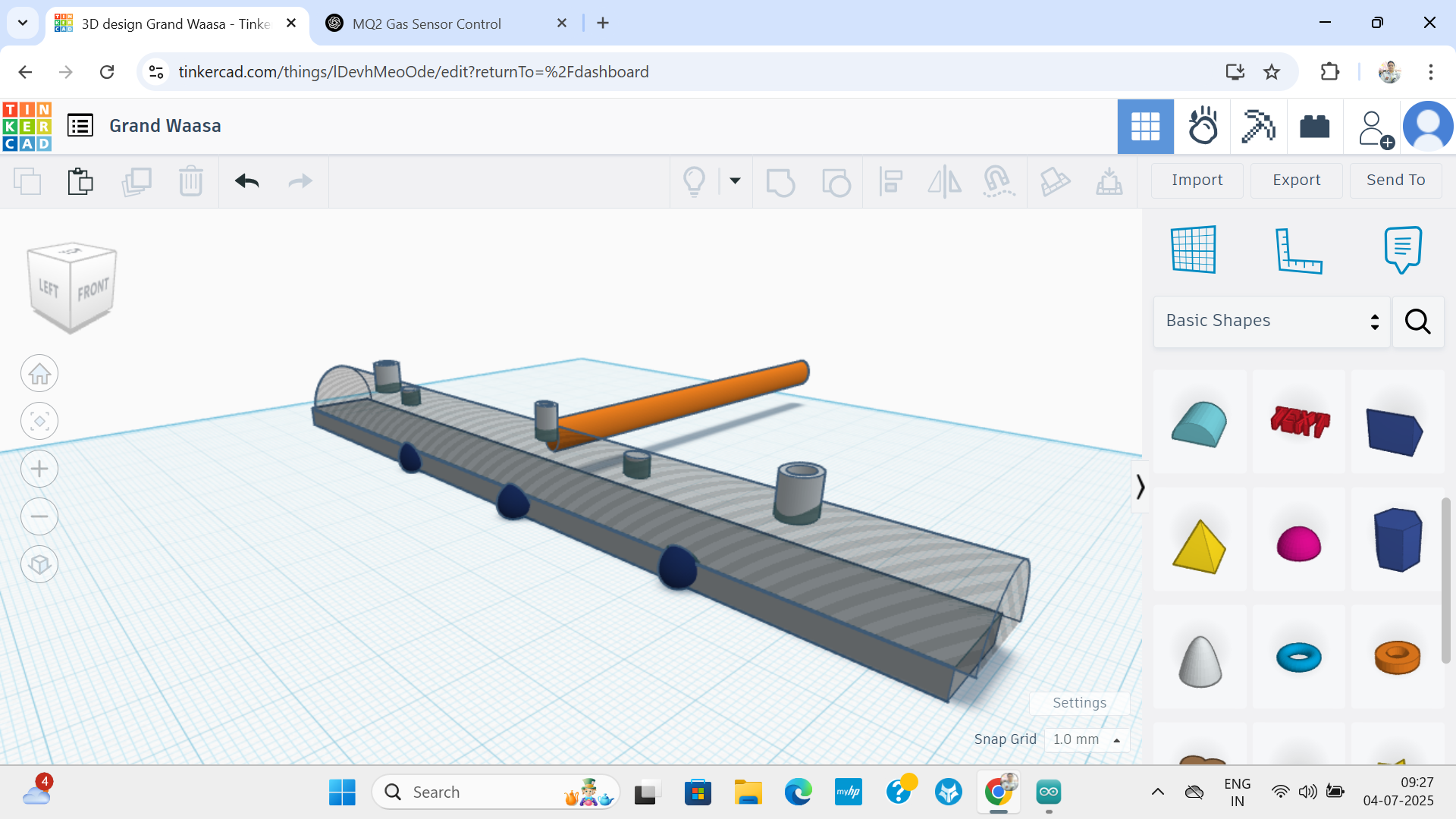The problem is of the constant dust particles which are released from transportation of raw materials such as limestone and coal through the belt-line near the cement plants. Because of this ,people suffer with Asthma and other diseases.
For this we can modify an ai sensor system to have an specific limitation of the exceeding dust so that the extra dust can be released in a different area dividing the dust.
Sarlanagar, Maihar, Madhya Pradesh, India
Solution
| Component | Description |
|---|---|
| Technical Components | ### 1. Technical Components Needed #### a. Water Sprinklers - **Component**: Micro-sprinklers with adjustable nozzles. - **Behavior**: Spray water at regular intervals to settle dust. - **Avoid**: Excessive water use by using sensors to activate only when dust levels are high. #### b. Dust Sensors - **Component**: PM2.5 and PM10 sensors to monitor dust levels. - **Behavior**: Activate exhaust filters when dust exceeds a threshold. - **Avoid**: Unnecessary activation to save energy. #### c. Exhaust Filters - **Component**: HEPA filters with variable speed fans. - **Behavior**: Filter air when dust levels are high. - **Avoid**: Noise pollution by using low-noise fans and proper insulation. #### d. Speed Controllers - **Component**: Variable frequency drives (VFDs) for conveyor belts. - **Behavior**: Adjust belt speed to reduce friction and dust generation. - **Avoid**: Overheating by ensuring proper cooling. #### e. Active Air Purifying Masks - **Component**: Masks with built-in air quality sensors and HEPA filters. - **Behavior**: Activate filtration when poor air quality is detected. - **Avoid**: False activations by calibrating sensors correctly. #### f. Covers - **Component**: Semi-circular covers with small openings for air passage. - **Behavior**: Contain dust while allowing airflow. - **Avoid**: Gaps by ensuring tight seals. #### g. Pipelines - **Component**: Water pipelines connected to sprinklers. - **Behavior**: Supply water to sprinklers. - **Avoid**: Leaks by using high-quality materials. ### 2. Recommended Tech Stack #### a. Hardware - **Microcontrollers**: Arduino or Raspberry Pi for sensor and actuator control. - **Sensors**: PM2.5/PM10 sensors, humidity sensors (to avoid overwatering). - **Actuators**: Solenoid valves for sprinklers, VFDs for speed control, fans for exhaust. #### b. Software - **Firmware**: Custom code for microcontrollers to manage sensors and actuators. - **Communication**: MQTT or HTTP for sensor data transmission (if centralized monitoring is needed). - **Monitoring**: Simple dashboard (e.g., Grafana) for real-time dust levels and system status. #### c. Power - **Low-voltage DC**: For sensors and microcontrollers. - **AC/DC Converters**: For actuators like VFDs and fans. ### 3. Detailed Implementation Steps 1. **Design Covers**: - Create semi-circular covers with small openings for air passage. - Ensure no gaps to prevent dust leakage. 2. **Install Sprinklers**: - Attach micro-sprinklers to the covers with adjustable nozzles. - Connect to water pipelines with solenoid valves for control. 3. **Install Dust Sensors**: - Place PM2.5/PM10 sensors inside and outside the covers. - Connect sensors to microcontrollers. 4. **Install Exhaust Filters**: - Attach HEPA filters with variable-speed fans to the covers. - Connect fans to microcontrollers for activation based on sensor data. 5. **Install Speed Controllers**: - Connect VFDs to conveyor belt motors. - Program VFDs to adjust speed based on dust levels or operational needs. 6. **Distribute Masks**: - Provide masks with built-in air quality sensors and HEPA filters to workers. - Ensure masks activate only when needed. 7. **Integrate Control System**: - Program microcontrollers to manage sprinklers, fans, and VFDs based on sensor data. - Implement a failsafe to avoid excessive water use or energy waste. 8. **Test and Calibrate**: - Test the system under different dust conditions. - Calibrate sensors and adjust thresholds for optimal performance. ### 4. Required Technical Learning 1. **Microcontroller Programming**: - Learn to program Arduino/Raspberry Pi to read sensors and control actuators. 2. **Sensor Calibration**: - Understand how to calibrate PM2.5/PM10 sensors for accurate readings. 3. **Control Systems**: - Basics of feedback loops and PID control for adjusting sprinklers and fans. 4. **Mechanical Design**: - Learn about materials and design for covers to prevent gaps. 5. **Electrical Safety**: - Understand low-voltage and high-voltage safety for installing VFDs and fans. ### 5. Budget Calculation #### a. Hardware Costs 1. **Microcontrollers (Arduino/Raspberry Pi)**: $30 x 5 = $150 2. **PM2.5/PM10 Sensors**: $50 x 5 = $250 3. **Humidity Sensors**: $20 x 5 = $100 4. **Solenoid Valves**: $15 x 10 = $150 5. **Micro-sprinklers**: $5 x 20 = $100 6. **HEPA Filters and Fans**: $100 x 5 = $500 7. **VFDs**: $200 x 2 = $400 8. **Masks with Sensors**: $50 x 20 = $1,000 9. **Pipelines and Fittings**: $200 10. **Covers (Custom Fabrication)**: $500 11. **Miscellaneous (Wires, Connectors, etc.)**: $200 **Total Hardware Cost**: $3,550 #### b. Software Costs 1. **Open-Source Software**: $0 (Arduino IDE, Grafana, etc.) 2. **Custom Development**: $500 (if outsourcing) **Total Software Cost**: $500 #### c. Maintenance Costs (First Year) 1. **Filter Replacements**: $200 2. **Sensor Calibration**: $100 3. **General Maintenance**: $300 **Total Maintenance Cost**: $600 #### **Total Estimated Budget**: $4,650 ### Notes: - Costs are approximate and may vary based on supplier and region. - Custom fabrication of covers may require additional design costs. - Labor costs for installation are not included. |
| Key Features |
Feature: Water sprinklers
Format: water source Usage: To settle down the dust particles.
Feature: Dust filters
Format: turns ON when given permission with the dust monitors. Usage: To filter the air
Feature: Speed controllers
Format: connected with the AI sensors Usage: To reduce the friction
Feature: Active air purifying masks
Format: works when air is not clean Usage: it uses the filters to clean the air so that we don't get any dust. |
| Implementation Steps | Cover should be semi-circle in shape, with small openings. The sprinklers should have tiny holes. There would be pipelines connected with belts. |

